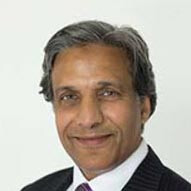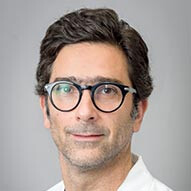Pediatric cardiac catheterization
Our cardiac team performs more than 800 pediatric cardiac catheterization procedures each year and we have one of the largest programs in the country. We are recognized cardiac catheterization leaders, and doctors from across the U.S. come to us for advice and expertise. At Children’s Health℠, we have the resources and expertise to do any type of procedure needed to help your child have a healthy, happy life.
What is a pediatric cardiac catheterization procedure?
Cardiac catheterization is a non-surgical procedure. It can be used to diagnose a heart defect like coronary artery disease, heart valve disease, congenital heart disease and cardiomyopathy. It can also be used to fix a heart defect by placing a closure device, replacing a valve or widening an artery or vein with a stent. More recently, our doctors have started performing lymphatics interventions in the catheterization lab for patients with lymphatic abnormalities. Doctors may also use cardiac catheterization to evaluate a previously repaired heart defect to make sure everything is as healthy as possible.
At Children’s Health, we are constantly finding ways to raise the bar on care. For example, we were one of the first centers in Texas with a dedicated patent ductus arteriosus occlusion program that focuses only on fixing holes/abnormal connections in the hearts of babies weighing less than two pounds. We also participate in national research aimed at improving cardiac catheterization outcomes.
Medical device companies actively seek our expertise to test new technology and equipment. Our team publishes reports and studies in major medical journals and is invited to speak at medical meetings and conferences across the U.S.
Typically, before your child has a cardiac catheterization, they will have an echocardiogram. This is a painless, one-hour test that makes images of your child’s heart. This helps us prepare for your child’s cardiac catheterization by showing how their heart is structured and how the blood flows through it. Occasionally the team may perform advanced imaging including CT scan and MRI for better planning of the procedure.
What are the benefits of a pediatric cardiac catheterization procedure?
The biggest benefit of interventional cardiac catheterization is that your child may not need traditional heart surgery as several defects can be addressed in the catheterization laboratory. Not only is cardiac catheterization less invasive than surgery, but your child will recover much faster.
What are the side effects of a pediatric cardiac catheterization procedure?
Usually, there are minimal side effects from a cardiac catheterization. On rare occasions, a child might have an allergic reaction to the dye we use or to a medication. Our team is very experienced and can treat this quickly. Exposure to X-rays is the other side effect, and we track this very closely. We are one of the few centers in the country that has consistently shown significant lower radiation dose year over year.
What are the risks with a pediatric cardiac catheterization procedure?
There are a few risks associated with cardiac catheterization, but these are uncommon, and our team’s experience helps us keep them to an absolute minimum.
Risks include:
Pain
Bleeding
Infection
Risk from anesthesia
Abnormal heart rhythms
What to expect with a Ppediatric cardiac catheterization procedure
Our interventional cardiologists, cardiac anesthesiologists, nurses and other experts work together to make all cardiac catheterization procedures go as smoothly as possible.
What to expect before a pediatric cardiac catheterization procedure
Our cardiac scheduling team will call you to give you a date for your child’s procedure. If needed, we’ll do a pre-catheterization consultation beforehand to talk to you and your child about the procedure. A cardiac nurse will call you the day before the procedure to go over instructions for your child's anesthesia, like what medications are OK to take, and when your child should stop eating and drinking. Having an empty stomach before the procedure helps prevent your child from vomiting during the procedure and possibly breathing food or liquid into their lungs.
Each of our three, state-of-the-art cardiac laboratories has the most advanced equipment and features the lowest levels of radiation available. The laboratories are designed so our team can perform each procedure in a streamlined way to reduce the amount of anesthesia a child is given.
What to expect during a pediatric cardiac catheterization procedure
During a cardiac catheterization procedure, a small, thin tube (known as a catheter) is inserted into veins and arteries to reach the heart. Cardiac catheterization uses X-rays to create images of the heart. Often, a dye is injected through a catheter that has been placed in the heart or major blood vessels. Additionally, measurements of pressures and oxygen levels within the heart chambers, veins and arteries are taken to assess the function of the heart and lungs.
Pre-procedure activity is usually scheduled between 6 a.m. and 10 a.m. The first procedure of the day usually starts between 7:30 a. m. and 8:30 a. m. First, you’ll meet with a nurse and anesthesiologist who will answer your questions. Then, we’ll move your child to the catheterization lab. You’ll be escorted to the waiting area. Each hour, our team will text you updates on how your child is doing. After the procedure is over, we’ll print pictures of your child’s heart so you can see what we found or what we were able to fix.
What to expect after a pediatric cardiac catheterization procedure
Your child will be in a recovery room for a few hours until the anesthesia wears off. We’ll continue to monitor their heart rate, oxygen level, breathing rate and blood pressure while they recover. During this time, they’ll be able to drink clear fluids and eat. They shouldn’t feel any pain. Most children can go home either the same or the next day.
How do I prepare my child for a pediatric cardiac catheterization procedure?
No matter what age your child is, we’re here to help answer any questions about preparing for cardiac catheterization.
If your child is younger than 10, we can have them meet with a Child Life specialist. A Child Life specialist will demonstrate how the procedure works with a teddy bear and talk about how the procedure can help fix their heart or find out what’s causing the problem. For pre-teens, we can answer any questions they have about anesthesia and why the procedure is needed.
What questions should I ask my provider about a pediatric cardiac catheterization procedure?
What are the risks and benefits of cardiac catheterization?
What if something unexpected happens during the procedure?
Why does my child need this?
Pediatric cardiac catheterization procedure doctors and providers
 M. Iqbal Ahmed, MDPediatric Anesthesiologist
M. Iqbal Ahmed, MDPediatric Anesthesiologist Munes Fares, MDPediatric Cardiologist
Munes Fares, MDPediatric Cardiologist Sana Ullah, MDPediatric Anesthesiologist
Sana Ullah, MDPediatric Anesthesiologist Suren Veeram Reddy, MDPediatric Cardiologist
Suren Veeram Reddy, MDPediatric Cardiologist Luis Zabala, MDPediatric Anesthesiologist
Luis Zabala, MDPediatric Anesthesiologist Andrea Wahlberg, PhDPediatric Neuropsychologist
Andrea Wahlberg, PhDPediatric Neuropsychologist